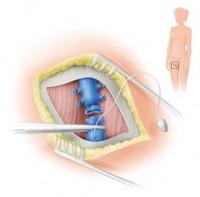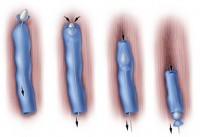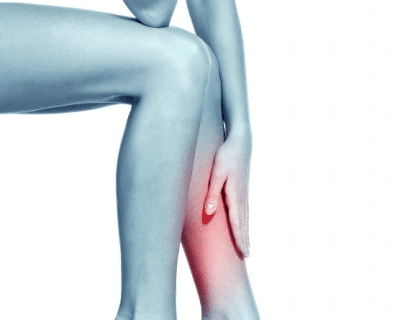Do you suffer from Varicose Veins?
Varicose veins are gnarled, enlarged veins that most commonly appear in the legs and feet. Damage in the lower extremities of the body is more common due to standing and walking increases the pressure of those veins. These veins can appear bulging and twisted with a dark purple or blue color.
Some people want to get rid of varicose veins for just cosmetic reasons, but others decide to seek medical help due to aching pain and discomfort. Painful symptoms include an achy or heavy feeling in the legs, itching around one or more veins, burning, throbbing, swelling, and hardening of the vein.

The traditional technique for surgical stripping is ligation and stripping of the great saphenous vein (GSV), the long vein that extends from the anklebone along the inside of the leg and thigh and empties into the femoral vein in the groin. Ligation and stripping involve tying off the abnormal vein (ligation) and physically removing it (stripping).
Ligation and stripping are performed in a hospital setting or outpatient surgical center under local, spinal, or general anesthesia. The surgeon makes a small incision in the groin to expose the diseased GSV, which is tied off.
The surgeon then makes a series of incisions along the leg from the thigh to a point just below the knee. Using a specialized stripping tool that is inserted and threaded through the incisions, the surgeon strips out the diseased vein.

What is Vein Stripping?
Vein stripping is the surgical method of treating varicose veins to not only improve the skin’s appearance but also reduce the pain and health risks associated with large varicose veins.
How does Vein Stripping work?
During the vein stripping procedure, the surgeon makes small incisions near the top and bottom of the damaged vein.
A thin, flexible plastic wire is then inserted into the vein through the top incision, tied to the vein, and pulled out through the bottom incision. After pulling out the varicose veins, the surgeon will close the incisions with stitches.
How long does the Procedure take?
On average, the vein stripping procedure takes about 60-90 minutes.
How long is the Recovery?
Recovery times depend on how many veins were removed and on what parts of the body. However, it usually takes about 2-4 weeks to recover from the vein stripping procedure.

Are there any Risks Associated with the Vein Stripping Procedure?
Risks may include:
- Bruising.
- Scarring.
- Nerve Injury.
- Blood Clots.
- Heavy Bleeding.
- Allergic Reactions to Anesthesia.
How much does the Procedure cost?
This is a self-pay, all-inclusive price. Price will vary based on insurance and health status, use of additional resources, and so on. We offer flexible financing options for qualified customers.
CPT Code: 37718





